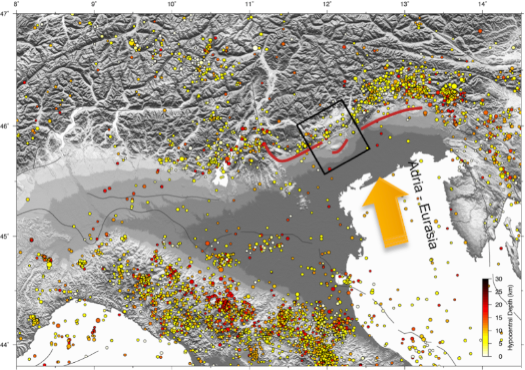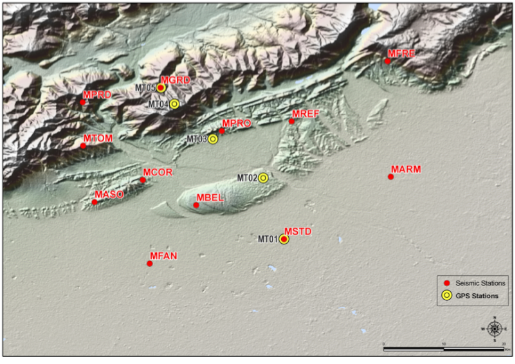The Montello Thrust Fault Multidisciplinary Experiment

The data available for this segment of the Southern Alpine fold-and-thrust belt left open several questions:
- Is the present-day sparse seismicity and the few M> 5.5 historical earthquakes in the last centuries evidences of a seismic gap at major thrust faults in the Veneto region? That could be filled by large earthquakes in the next future?
- Are there faults that accommodate aseismically, or partially aseismically, the known plate convergence?
- Which is the real seismic/aseismic ratio of active faults of the Southern Alps?

Since late 2008, five semi-continuous GPS stations have been installed along a linear NNW-SSE trending 30 km-long array crossing the Montello hill with the goal of studying the deformation processes in the framework of the wider plate boundary kinematics. In particular, we aimed at measuring the local velocity gradient, which will be used to develop models of the geometry and kinematics of faults accumulating elastic deformation. Simultaneous seismic investigations, started in 2010 with a temporary network, are fundamental to provide independent observations and shed light on a complete geophysical interpretation about the geometry and kinematics of the Montello structure.